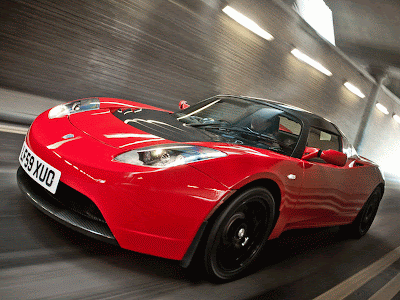
Today's very special Guest Lecture comes to us from Pasha Malla, author of The Withdrawal Method, All Our Grandfathers Are Ghosts, and a scouting report on Teen Wolf done for our mutual pals at McSweeney's.
Michael Jordan never kicked Craig Ehlo in the head. For years I was sure he did: Cleveland, first round of the 1989 Playoffs, Jordan hits The Shot and hysterical with joy cuts Craig Ehlo down with an accidental boot salute; Ehlo drops like a drop-kicked sack of bricks and the assault is largely ignored—in the making of history, after all, the vanquished are irrelevant. Cue the Legacy. Awesome.
During this year’s Playoffs, The Shot has resurfaced in heavy commercial-break rotation, and each time it plays I’m thrown into painful paroxysms of embarrassment at drunken arguments I’ve had with strangers—“He kicks him, man, I’m telling you. Just watch for it.” But, fuck: Jordan’s Nikes are clearly nowhere near anyone, Ehlo’s collapse is only out of grief and shame, and it turns out I’ve deluded myself for two decades. I don’t feel so bad, though: sure, my Shot-and-Kick was a fabrication, but so is the actual footage.
While nba.com claims, “As the ball nestled through the net, Jordan pumped his fists in jubilation, completing a video highlight for the ages,” this is a moment that has only ever existed in replay. Those watching the game on TV didn’t see Jordan’s celebratory histrionics; the original CBS telecast cut immediately (and bafflingly, in retrospect) to the reaction of then-Bulls coach Doug Collins. If the NBA is to be believed, the popularized version of The Shot ranks with the moon landing and JFK assassination among the great, suspect, live experiences in American television history—regardless that the spread-eagle jump and fist-pumps only surfaced later. But we need a moment to commemorate the birth of a legend, and so the redux has been fed to us and has become, now, how we remember something most of us never saw.

The “Where will amazing happen this year?” ad campaign is weird for a lot of reasons. First, “where” seems an odd choice of interrogatives. The host city or corporate-sponsored stadium hardly seems significant—rather than the victories of teams, to me “amazing” connotes sublime moments of individual athleticism, like The Shot, that linger in our collective memory. (E.g. I have no idea how deep that Bulls team went in the ’89 Playoffs, but I do know, and can explicitly picture, how Jordan hangs in the air, waits for Craig Ehlo to land, and then bangs that jumper.)
“Where” is especially lame when you consider the alternatives: “Who will [make] amazing happen” acknowledges both the simmering potential of superstars and the possibility for unlikely heroes, “when” insinuates suspense-laden expectation, “how” a reverence for physical theatrics, “what” = mystery, and “Why will amazing happen (and why will it matter)?” could even be (existentially, abstractly, and especially if voiced by Werner Herzog) kind of funny. But we get “where”—right.
Anyway, aside from the fact that it’s a clunky non sequitor of a motto, the corresponding commercials make me uncomfortable on a more personal level. I’m of an age, demographic and cultural moment that filters my enjoyment of the NBA, like most things, through a scrim of nostalgia. As a result, I’m routinely compelled from the present to a poignant anchor in the past: the slight shudder of melancholy, for example, I suffer when a former star I grew up loving (Sam Cassell, say) checks in for garbage time at the end of a blow-out. And I like my version of the past just fine. I don’t want it co-opted and fed back to me as advertisements.
Mainly what gets me about WWAHTY? is its perversion of nostalgia. The highlights—shown without context, slowed down, flipped to black and white (= The Past), soundtracked to the sad parts of the score from Amelie—self-consciously create wistfulness they may not warrant. The suggestion that each of these plays is “amazing” relies on us remembering each of them and what, in their respective games, each one meant—whether, for example, that alley-oop to Andrei Kirilenko came late in the fourth quarter with the scored tied or early in the half with Utah up by 20. I’m not a Jazz fan—does such a thing even exist?—so I have no idea.
I watch a lot of basketball and I have to confess that I don’t remember most of the plays in these commercials. Collectively, they feel a bit like a compilation of money shots to the porn enthusiast: glorious moments, for sure, but what about the build-up, where the real drama happens? And even as pure highlights, few strike me as particularly amazing. I see Lebron dunk and Dwayne break ankles and Manu bank lay-ups all the time; without the context to inform these plays, I’m a little lost—blame my ignorance, maybe, or failing mental capacity, but that the NBA is relying on us to imbue these moments with meaning feels not only ostentatious, but counter-intuitive to what really makes playoff basketball so exciting. In the regular season, highlights are fine; but after the 82 are up, it’s all about when the big shots happen—and for that, context is absolutely necessary.
“Remember this?” the WWAHTY? ads seem to demand. “It was important. Remember this.” The whole business smacks of contrivance, but it’s not disingenuous. In fact, nothing could be more revealing and apt than what is articulated through the whole campaign: all of us—the NBA front office and players and coaches and owners and media and fans—want to believe that, with each round of the Playoffs, we are experiencing history.

If we are to believe the marketing campaign that has loomed over and punctuated the past few weeks, we are already living the past: the highlights of the night, the days of our lives, the memories of our future. The NBA isn’t rhetorically asking where amazing will happen; it’s more an open call to players to create moments to be relived, later, in endless replay, and for fans to be ready to acknowledge them. The effect is sort of a living archive, which, at least for me, has been causing some problems, because it’s impossible to figure out what’s genuine.
There was an interesting conversation on this site last year in the wake of the Celtics’ Championship win—and, more so, Kevin Garnett’s. Was his lycanthropic howling— “Anything’s possible!” “I’m certified!” &c.—premeditated, contrived and fake, or was it an authentic expression of emotion? There were arguments; things got heated. Assessing other people’s motivations is always futile, but Garnett was a special case: here was a guy who we’d always believed, whose sincerity was unquestionable, who came correct with the straight real and wept in John Thompson’s lap like a failed son. But, then the made-for-TV moment—and even worse, it felt made-for-replay.
Everything seems to go back to that old Michael Jordan bucket-and-swag—which, keep in mind, but for one savvy cameraman we might have never seen happen. Michael Jordan is history, but also Michael Jordan Is History: his great airy legacy looms over the league and everyone in it. Comparable Greats—Pele, Gretzky—are certainly paragons of individual achievement, yet their shadows don’t loom quite as vastly over soccer and hockey as Mike’s does over the basketball. Maybe it’s because neither has an eponymous “highlight for the ages” that not only defines their careers, but the modern era in their respective sport.
Michael Jordan provides pro ballers more than the archetype for all achievement; he’s created a model for the very idea of legacy—not only in how dominantly you play the game, but how you’re remembered. And having a metonymic, iconic image is imperative to that. So it feels, at least to me, that today’s NBA has created a culture in which players, if they want to be ranked alongside Jordan, or at least recalled in the same breath, need a watershed moment, and they need that moment recorded, and they need that moment replayed—so it’d better be good, and it’d better be theatrical.
It’s the way that this need for performativity manifests in the flow of games that troubles me the most. I shudder at the contrivance of, say, an and-one Lebron James shoulder-shimmy, which seems so concertedly not just mugging for the cameras and fans, but mugging for posterity. And, perhaps most amazingly, that sort of affectedness seems to be trickling down from the league’s top tier to its lesser lights. Even way back in the first round, the unbridled exuberance of a relative nobody like Joakim Noah felt exuberantly put-on. The league needs the wild-looking, sorta foreign youngster with a limited skill-set to have the heart of a hyperactive lion who roars and roars. And Noah—much as I grew to like the guy—seems to recognize that. Good thing we’ve got it on tape!
This sort of cynicism sucks, because I love the Playoffs. I want to believe what I’m seeing is real. But what I don’t want is to have the best moments fed back to me in slo-mo black and white by the league’s marketing department. WWAHTY? replaces the agency of subjective memory with the stagnant banality of fact; it repackages joy as commodity. If they ever were, each of the athletes in those spots is no longer doing anything amazing; they are merely figures in advertisements, reduced to hapless shills. The suggestion seems to be that players who aren’t performing something easily quantifiable as “amazing” will not find their way into a TV spot and, accordingly, will never remembered by anyone.

I think I allowed myself to believe that Michael Jordan kicked Craig Ehlo in the head because back then that sort of bizarre accident actually felt possible—let’s keep things moving and blame pre-adolescent innocence rather than retrospective idealism. But my corrupted memory also makes me think about how excited I’ve gotten when this year’s playoff action has spilled into the unpredictable—Rafer Alston smacking Eddie House on the head, Derek Fisher’s cross-check of Luis Scola—and I feel even sadder. Are eruptions of violence the only time when I let myself feel that I’m not watching programmed automatons, but actual human beings?
Maybe it’s more that I know these are scenes the NBA can’t co-opt, blemishes that the league is in a constant battle to buff and polish out of its pristine product—see the resultant suspensions and ejections. And, when it comes to basketball, I don’t crave or fetishize violence; Vernon Maxwell punching a fan in the face is pretty amazing, in its way, but it’s certainly not a moment in league history that I particularly cherish. No, I just want my memories for myself. And what I don’t want, ever, is to think the stuff I’m playing out in my head (like John Starks’s career-defining dunk on Horace Grant—and MJ, bitch!) is just another commercial.
There’s a weird tension between the celebration I associate with The Shot, which feels absolutely genuine, and the knowledge that I might have never known it happened. In retrospect, it’s more than Michael Jordan’s metamorphosis from showman to winner, but also from man to brand. And while lamenting the commodification of Jordan is a bit like standing in the Ganges and whining that you can’t drink the water, there is still a precious purity to my fantasy about that fabricated replay—after all, Craig Ehlo taking a roundhouse to the temple isn’t the version that’s being played ad infinitum, as a promo for the league.
















No comments:
Post a Comment